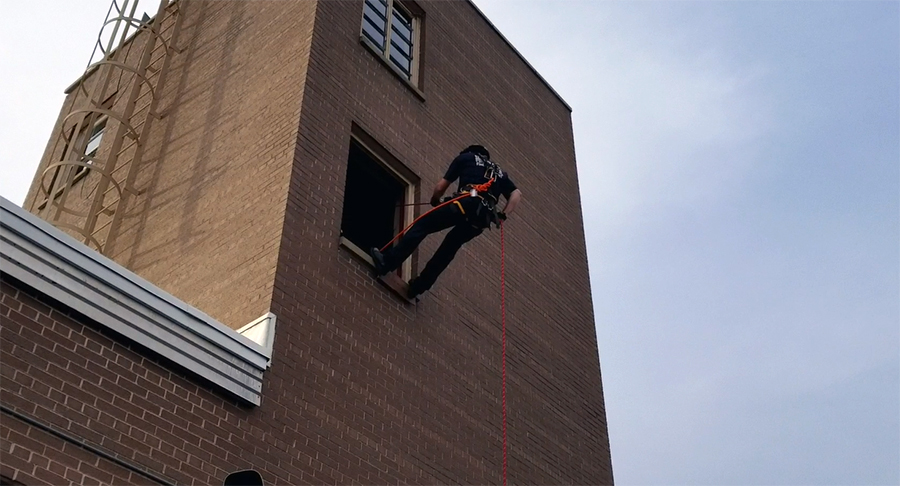Video: SPFD practices rope rescue training
By Brandi Makuski
Firefighters in Stevens Point on Wednesday took advantage of the unusually mild weather by climbing out of a perfectly good window.
Assistant EMS Chief Joe Gemza said the department is almost always training is some fashion, but crews decided to close out February with some rope rescue training, one of three specialized skills on which the SPFD has a renewed focus.
“There’s a renewed effort to get our guys up to being fully trained at the technician level for ropes, confined spaces and trench rescue,” said Lt. David Briggs.
Stevens Point firefighters are broken into three squads—A, B, and C—and Briggs said while some on each crew already have training in the specialized rescue skill-sets, the department as a whole hasn’t formally trained in the three areas since 2005-06.
“All three crews should be trained up to operations level in those three disciplines, hopefully, by the end of 2018,” Briggs said.
In 2019, he added, the department plans to train four members of each crew at the higher “technician” level in each of the disciplines, a designation that would be maintained with regulated, monthly training.
“In the event of a severe enough call, all 12 of those staff members would be called upon to perform the highly-skilled tasks needed in that rescue,” he said, adding those highly-skilled tasks might include raising victims from trenches, or using certain types of monitors and ventilation equipment in confined, or collapsed spaces.
Several members of SPFD already serve as certified instructors on various rescue techniques at Mid-State Technical College in Wisconsin Rapids. But some of the department’s younger members—those who’ve been hired in the past decade or so, Assistant Fire Chief Jodi Baganz said—haven’t received much formal training in the most dangerous of rescue scenarios.
Baganz estimated about one-third of the department still needed formal training on the higher-end technical skills.
“Call it a succession plan, if you want,” he said.
Briggs said SPFD was the go-to department for confined space rescue throughout the county, and until now, has trained on rope and trench rescue as time allows.
“Our community risk assessment shows that it is so infrequent to need those [specialized] skills…but there’s nobody else to do them but us,” Briggs said. “So we have to renew that effort to be ready when we’re called, because we will be called.”
Firefighter/paramedic Trevor Howard takes a shortcut down 30 feet at SPFD:

